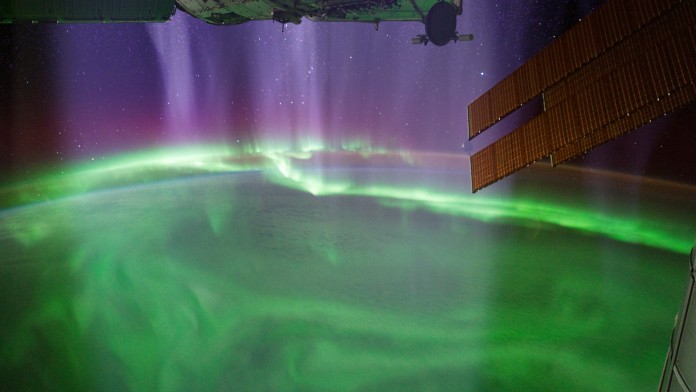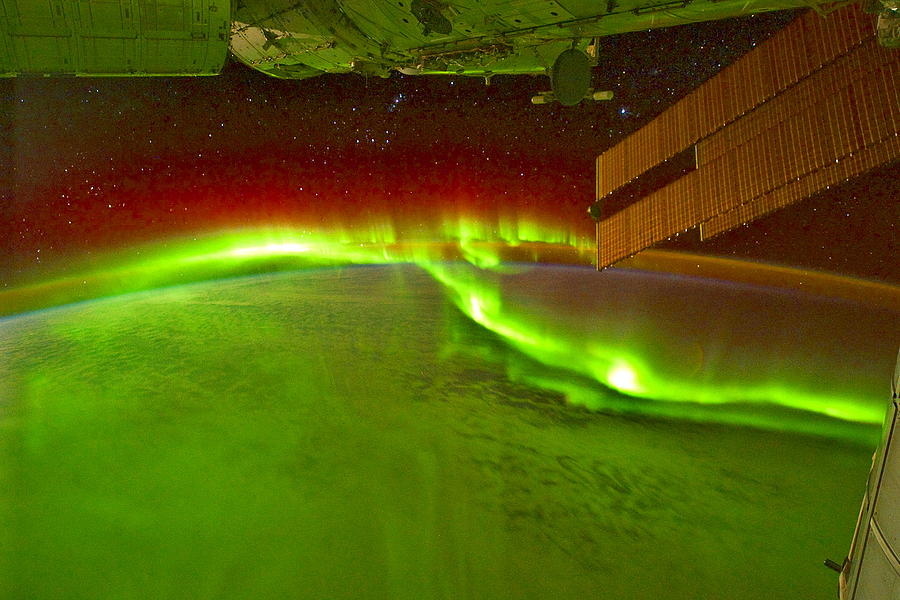Green From Space
Science and NASA
Some 400 kilometers above our planet astronauts on board the international space station enjoy the unique view on the earths polar lights, up close and personal.
They are able to actually fly into the auroras. Don Pettit, a flight engineer for ISS Expedition 30, said, “it’s like being shrunk down and put inside of a neon sign.”
Auroras are caused by solar activity. Dust of solar wind and coronal mass ejections strike earth’s magnetic field, rattling our planets protective shield of magnetism. This causes charged particles to rain down over the poles. Thus lighting up the atmosphere where they hit. The physics is a kin to what happens in a picture tube of a color TV.
Incoming particles are guided by earth’s magnetic field to a pair of doughnut shaped regions called auroral ovals. There is one around the North Pole and one around the south. Sometimes when solar activity is high, the ovals expand and the space station orbits right through them. Which is exactly what happened in late January of 2012. A sequence of powerful solar flairs that sparked a light show.
 The auroras can be seen as brightly as city lights on the earth below. Even in the day/ night terminator of the rising and setting sun. It was simply amazing. Pettit and other crew member captured video of the display. Which officials say is some of the best ever taken from earth orbit.
The auroras can be seen as brightly as city lights on the earth below. Even in the day/ night terminator of the rising and setting sun. It was simply amazing. Pettit and other crew member captured video of the display. Which officials say is some of the best ever taken from earth orbit.
The video that they took captures the full range of aurora colors. Red, green and many shades of purple. These hughes correspond to different quantum transitions in excited atoms of oxygen and nitrogen. The precise color at any altitude depends on the density and temperature of the atmosphere.
Red auroras reach all the way up to our altitude which is 400 kilometers above earth. Sometimes you feel like you can reach out and touch them. However the green emissions tend to stay below the space station.
They move like a living shag carpet of lights and the astronauts are able to fly right over them. It is not unsettling to see the auroras underfoot Pettit says. The thing that he does find discomforting is the meteors. “Occasionally, we are seeing a meteor burning up in the atmosphere below. This does look strange because you should be looking up to meteors not down at them.”
Pettit says that back in 2003 he was able to see even stronger than they are today. But that doesn’t mean that he isn’t going to see some amazing ones. There are more auroras in the offing. Following some quiet years, the sun is waking up again. Solar activity is trending upward slowly and the maximum was expected and seen in 2013.








